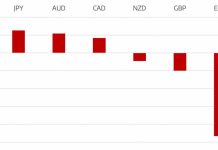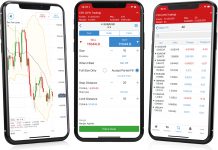S&P Global Market Intelligence’s third annual Mobile Money survey shows the branch still matters to customers, but the value of mobile banking apps should not be ignored. The 2017 survey of 4,000 mobile bank app users was fielded between Jan. 26 and Feb. 1. The survey found that more users checked their app regularly when compared to a year earlier, while fewer respondents visited the branch as often. The survey found that more customers would consider paying for an app or even changing banks for a better app experience. Additional highlights include:
- Customers value their mobile bank apps so much, many would be willing to pay a fee to keep using them, according to a survey of 4,000 mobile bank app users by S&P Global Market Intelligence . The percentages of respondents willing to pay $1 or $3 per month for mobile bank app use increased from our 2016 survey. This shows how powerful mobile apps could be as a retention tool for banks trying to attract and hold onto core deposits in a competitive, rising rate environment.
- There is still plenty of room for improvement in mobile bank app features. About a third of survey respondents would like to see credit score tracking and fingerprint log-in capabilities added to their bank apps.
- Bank branch visits are declining among mobile app users, while daily app usage is on the rise. But the branch clearly still matters, as 81% of survey respondents reported visiting a branch in the previous month.
Banking customers value their mobile platforms, and a better mobile app experience could help reduce costly, straightforward transactions at the branch, where visits are declining.
While the results of S&P Global Market Intelligence’s third annual Mobile Money survey show the branch still matters to customers, the value of mobile banking apps, at the very least as a customer retention tool, should not be ignored. The 2017 survey of 4,000 mobile bank app users was fielded between Jan. 26 and Feb. 1. The survey found that more users checked their app regularly when compared to a year earlier, while fewer respondents visited the branch as often. The survey found that more customers would consider paying for an app or even changing banks for a better app experience.
The number of daily app users grew considerably, rising to 34% of respondents from 24% in the 2016 survey. Even as mobile app usage grew, 81% of app users said they had visited a branch of their primary bank in the previous month. That is down modestly from 83% of respondents in the 2016 survey.
Almost 53% of bank app users surveyed said they visited their bank branch one to three times in the last month, while 28% went four or more times.
The survey found that most of the activity at the branch relates to fairly vanilla deposit transactions. Many of those transactions can be conducted through digital channels and come at a fraction of the cost for the bank.
When asked about their most recent visit, 68% of respondents said they went to make a deposit while 54% visited the branch to withdraw funds.
For data on the graphics in this article, please see the supplemental spreadsheet.
Although branch visits have yet to fall by the wayside among mobile bank app users, 53% of survey respondents would consider opening a bank account with a branchless bank. A fairly large portion of bank app users (38%) surveyed said they would not consider banking at an institution without branches, and 9% claimed to already have an account with a branchless bank.
Among users surveyed, the most used bank app features include check balance (83%), review transactions (66%) and transfer money between accounts (52%). Users that were surveyed could choose more than one response.
The top three features most frequently reported as missing from bank apps include credit score tracking (37%), fingerprint login (33%) and the ability to turn a debit or credit card on or off (29%).
This year’s survey found that 10% of bank app users switched to a different bank in the last 12 months. Of those who switched banks, 38% did so for better customer service and 31% for a better branch network in their area. Lower fees and higher interest rates drove a number of customers to other banks, at 30% and 26% of respondents, respectively, but nearly the same number of those surveyed (30%) said they switched for a better bank mobile app experience. Respondents could indicate more than one reason for switching banks.
We asked whether customers who had not switched banks would consider doing so to get a better mobile bank app experience, and just over 50% said they would switch for features they felt were missing.
Some banking customers said they would be willing to pay for their mobile apps. We asked if respondents would be willing to pay $3 per month to continue using their bank app; 22% responded yes. We also asked if they would be willing to pay $1 per month to continue using their mobile bank app, and 40% said yes. The 2016 survey found 21% and 39% of respondents willing to pay $3 and $1 per month, respectively.
No one likes additional fees, but the survey results show that a favorable mobile banking experience could influence customers’ choice. And even if a bank decided that charging for an app was not a viable option, investing in the technology could lead to stickier customers and possibly allow them to be less sensitive to changes in market rates when pricing their deposits.
Methodology
The 2017 Mobile Money survey was fielded between Jan. 26 and Feb. 1 from a random sample of 4,000 U.S. mobile bank app users aged 18 and older. S&P Global Market Intelligence weighted the data to be nationally representative. Results from the survey, which was conducted online, have a margin of error of +/- 1.6% at the 95% confidence level based on the sample size of 4,000.
For the full analysis featuring additional S&P Global Market Intelligence analysis please click here: http://www.snl.com/web/client?


































